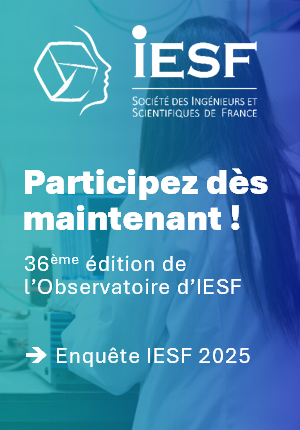Module d’auto-adaptation d’antenne et synthèse d’impédance intégré dans la bande sub-6 GHz pour les applications RF de nouvelle génération // Integrated System for Adaptive Antenna Tuning and Synthesized Impedance in the Sub-6 GHz Band for Next-Generation
| ABG-128726 | Sujet de Thèse | |
| 19/02/2025 | Financement public/privé |
CEA Grenoble INP Laboratoire Architectures Intégrées Radiofréquences
Grenoble
Module d’auto-adaptation d’antenne et synthèse d’impédance intégré dans la bande sub-6 GHz pour les applications RF de nouvelle génération // Integrated System for Adaptive Antenna Tuning and Synthesized Impedance in the Sub-6 GHz Band for Next-Generation
- Télécommunications
- Sciences de l’ingénieur
Réseaux de communication, internet des objets, radiofréquences et antennes / Défis technologiques / Electronique et microélectronique - Optoélectronique / Sciences pour l’ingénieur
Description du sujet
L’adoption croissante des systèmes RF sub-6 GHz pour la 5G, l’IoT et les technologies portables a créé une demande critique pour des solutions compactes, efficaces et adaptatives afin d’améliorer le transfert d’énergie, de réduire les effets de désaccord liés à l’environnement, et d’offrir des capacités avancées de détection. Cette thèse propose un système innovant sur puce (SoC) intégrant une unité d’accord d’antenne (ATU) et un module d’impédance synthétisée (SIM) pour répondre à ces défis. En combinant la mesure d’impédance in situ et une réadaptation dynamique, le système résout une limitation majeure des antennes miniatures : leur sensibilité extrême aux perturbations environnementales, telles que la proximité du corps humain ou des surfaces métalliques. De plus, l’intégration du module d’impédance synthétisée apporte une polyvalence supplémentaire en permettant l’émulation de charges complexes. Cette capacité optimise non seulement le transfert d’énergie, mais ouvre également la voie à des fonctionnalités avancées, comme la caractérisation de matériaux et la détection de l’environnement autour de l’antenne.
L’un des axes centraux de cette recherche est la co-intégration d’un analyseur de réseau vectoriel (VNA) avec un réseau de post-matching large bande (PMN) et un module d’impédance synthétisée. Cette architecture combinée offre une surveillance en temps réel de l’impédance, un ajustement dynamique et la génération de profils d’impédance spécifiques, essentiels pour caractériser la réponse de l’antenne dans différents scénarios. Un fonctionnement garanti dans la bande 100 MHz–6 GHz est assuré tout en maintenant une faible consommation d’énergie grâce à une gestion efficace des cycles d’activité.
Profil recherché : vous êtes passionné(e) par l’électronique et la microélectronique, et souhaitez contribuer à une avancée technologique majeure ? Nous recherchons un(e) candidat(e) motivé(e) et curieux(se), doté(e) des qualités suivantes :
. Formation : Diplômé(e) d’une école d’ingénieurs ou titulaire d’un master en électronique ou microélectronique.
. Compétences techniques :
Solides connaissances en technologies transistors (CMOS, Bipolaire, GaN…).
Expertise en conception analogique/RF.
Expérience avec des outils de conception tels qu’ADS et/ou Cadence.
Programmation : Compétences de base en Python, MATLAB ou autres langages similaires.
Expérience complémentaire : Une première expérience en conception de circuits intégrés serait un atout précieux.
. Pourquoi postuler : vous aurez l’opportunité de travailler sur des technologies de pointe au sein d’un environnement de recherche innovant et collaboratif. Vous serez accompagné(e) par des experts renommés du domaine pour relever des défis scientifiques et techniques stimulants.
Contacts : PhD.Ghita Yaakoubi KHBIZA : ghita.yaakoubikhbiza@cea.fr, HDR.Serge Bories : serge.bories@cea.fr
------------------------------------------------------------------------------------------------------------------------------------------------------------------------
------------------------------------------------------------------------------------------------------------------------------------------------------------------------
The growing adoption of sub-6 GHz RF systems for 5G, IoT, and wearable technologies has created a critical demand for compact, efficient, and adaptive solutions to enhance energy transfer, mitigate environmental detuning effects, and enable advanced sensing capabilities. This thesis proposes an innovative system-on-chip (SoC) that integrates an Antenna Tuning Unit (ATU) and a Synthesized Impedance Module (SIM) to address these challenges. By combining in-situ impedance measurement and dynamic re-adaptation, the system resolves a key limitation of miniature antennas—their extreme sensitivity to environmental perturbations, such as proximity to the human body or metal surfaces. Moreover, the integration of a Synthesized Impedance Module brings additional versatility by enabling the emulation of complex loads. This capability not only optimizes energy transfer but also allows for advanced functionality, such as material characterization and environmental sensing around the antenna.
A central focus of this research is the co-integration of a Vector Network Analyzer (VNA) with a broadband post-matching network (PMN) and a Synthesized Impedance Module. This combined architecture provides real-time impedance monitoring, dynamic tuning, and the generation of specific impedance profiles critical for characterizing the antenna's response under various scenarios. Guaranteed operation in the 100 MHz–6 GHz band is achieved while maintaining low power consumption through efficient duty cycling.
. Profile Sought : are you passionate about electronics and microelectronics and eager to contribute to a major technological breakthrough? We are looking for a motivated and curious candidate with the following qualifications:
. Education
Graduate of an engineering school or holder of a master’s degree in electronics or microelectronics.
Technical Skills
Strong knowledge of transistor technologies (CMOS, Bipolar, GaN…).
Expertise in analog/RF design.
Experience with design tools such as ADS and/or Cadence.
Programming
Basic skills in Python, MATLAB, or similar programming languages.
Additional Experience
Prior experience in integrated circuit design would be a valuable asset.
. Why Apply: you will have the opportunity to work on cutting-edge technologies in an innovative and collaborative research environment. You will be guided by renowned experts in the field to tackle exciting scientific and technical challenges.
Contacts: PhD. Ghita Yaakoubi Khbiza: ghita.yaakoubikhbiza@cea.fr, HDR. Serge Bories: serge.bories@cea.fr
------------------------------------------------------------------------------------------------------------------------------------------------------------------------
------------------------------------------------------------------------------------------------------------------------------------------------------------------------
Pôle fr : Direction de la Recherche Technologique
Pôle en : Technological Research
Département : Département Systèmes (LETI)
Service : Service Technologies Sans Fils
Laboratoire : Laboratoire Architectures Intégrées Radiofréquences
Date de début souhaitée : 01-09-2025
Ecole doctorale : Electronique, Electrotechnique, Automatique, Traitement du Signal (EEATS)
Directeur de thèse : BORIES Serge
Organisme : CEA
Laboratoire : DRT/DSYS/STSF/LAPCI
URL : https://www.linkedin.com/in/serge-bories-6149004/
URL : https://www.leti-cea.com/cea-tech/leti/english/Pages/Applied-Research/Facilities/Integration-Platform.aspx
URL : https://www.linkedin.com/in/ghita-yaakoubi/
L’un des axes centraux de cette recherche est la co-intégration d’un analyseur de réseau vectoriel (VNA) avec un réseau de post-matching large bande (PMN) et un module d’impédance synthétisée. Cette architecture combinée offre une surveillance en temps réel de l’impédance, un ajustement dynamique et la génération de profils d’impédance spécifiques, essentiels pour caractériser la réponse de l’antenne dans différents scénarios. Un fonctionnement garanti dans la bande 100 MHz–6 GHz est assuré tout en maintenant une faible consommation d’énergie grâce à une gestion efficace des cycles d’activité.
Profil recherché : vous êtes passionné(e) par l’électronique et la microélectronique, et souhaitez contribuer à une avancée technologique majeure ? Nous recherchons un(e) candidat(e) motivé(e) et curieux(se), doté(e) des qualités suivantes :
. Formation : Diplômé(e) d’une école d’ingénieurs ou titulaire d’un master en électronique ou microélectronique.
. Compétences techniques :
Solides connaissances en technologies transistors (CMOS, Bipolaire, GaN…).
Expertise en conception analogique/RF.
Expérience avec des outils de conception tels qu’ADS et/ou Cadence.
Programmation : Compétences de base en Python, MATLAB ou autres langages similaires.
Expérience complémentaire : Une première expérience en conception de circuits intégrés serait un atout précieux.
. Pourquoi postuler : vous aurez l’opportunité de travailler sur des technologies de pointe au sein d’un environnement de recherche innovant et collaboratif. Vous serez accompagné(e) par des experts renommés du domaine pour relever des défis scientifiques et techniques stimulants.
Contacts : PhD.Ghita Yaakoubi KHBIZA : ghita.yaakoubikhbiza@cea.fr, HDR.Serge Bories : serge.bories@cea.fr
------------------------------------------------------------------------------------------------------------------------------------------------------------------------
------------------------------------------------------------------------------------------------------------------------------------------------------------------------
The growing adoption of sub-6 GHz RF systems for 5G, IoT, and wearable technologies has created a critical demand for compact, efficient, and adaptive solutions to enhance energy transfer, mitigate environmental detuning effects, and enable advanced sensing capabilities. This thesis proposes an innovative system-on-chip (SoC) that integrates an Antenna Tuning Unit (ATU) and a Synthesized Impedance Module (SIM) to address these challenges. By combining in-situ impedance measurement and dynamic re-adaptation, the system resolves a key limitation of miniature antennas—their extreme sensitivity to environmental perturbations, such as proximity to the human body or metal surfaces. Moreover, the integration of a Synthesized Impedance Module brings additional versatility by enabling the emulation of complex loads. This capability not only optimizes energy transfer but also allows for advanced functionality, such as material characterization and environmental sensing around the antenna.
A central focus of this research is the co-integration of a Vector Network Analyzer (VNA) with a broadband post-matching network (PMN) and a Synthesized Impedance Module. This combined architecture provides real-time impedance monitoring, dynamic tuning, and the generation of specific impedance profiles critical for characterizing the antenna's response under various scenarios. Guaranteed operation in the 100 MHz–6 GHz band is achieved while maintaining low power consumption through efficient duty cycling.
. Profile Sought : are you passionate about electronics and microelectronics and eager to contribute to a major technological breakthrough? We are looking for a motivated and curious candidate with the following qualifications:
. Education
Graduate of an engineering school or holder of a master’s degree in electronics or microelectronics.
Technical Skills
Strong knowledge of transistor technologies (CMOS, Bipolar, GaN…).
Expertise in analog/RF design.
Experience with design tools such as ADS and/or Cadence.
Programming
Basic skills in Python, MATLAB, or similar programming languages.
Additional Experience
Prior experience in integrated circuit design would be a valuable asset.
. Why Apply: you will have the opportunity to work on cutting-edge technologies in an innovative and collaborative research environment. You will be guided by renowned experts in the field to tackle exciting scientific and technical challenges.
Contacts: PhD. Ghita Yaakoubi Khbiza: ghita.yaakoubikhbiza@cea.fr, HDR. Serge Bories: serge.bories@cea.fr
------------------------------------------------------------------------------------------------------------------------------------------------------------------------
------------------------------------------------------------------------------------------------------------------------------------------------------------------------
Pôle fr : Direction de la Recherche Technologique
Pôle en : Technological Research
Département : Département Systèmes (LETI)
Service : Service Technologies Sans Fils
Laboratoire : Laboratoire Architectures Intégrées Radiofréquences
Date de début souhaitée : 01-09-2025
Ecole doctorale : Electronique, Electrotechnique, Automatique, Traitement du Signal (EEATS)
Directeur de thèse : BORIES Serge
Organisme : CEA
Laboratoire : DRT/DSYS/STSF/LAPCI
URL : https://www.linkedin.com/in/serge-bories-6149004/
URL : https://www.leti-cea.com/cea-tech/leti/english/Pages/Applied-Research/Facilities/Integration-Platform.aspx
URL : https://www.linkedin.com/in/ghita-yaakoubi/
Nature du financement
Financement public/privé
Précisions sur le financement
Présentation établissement et labo d'accueil
CEA Grenoble INP Laboratoire Architectures Intégrées Radiofréquences
Pôle fr : Direction de la Recherche Technologique
Pôle en : Technological Research
Département : Département Systèmes (LETI)
Service : Service Technologies Sans Fils
Profil du candidat
Master ou diplôme d’ingénieur en électronique, microélectronique ou télécommunications
Postuler
Fermer
Vous avez déjà un compte ?
Nouvel utilisateur ?
Besoin d'informations sur l'ABG ?
Vous souhaitez recevoir nos infolettres ?
Découvrez nos adhérents
 ONERA - The French Aerospace Lab
ONERA - The French Aerospace Lab  CASDEN
CASDEN  MabDesign
MabDesign  Institut Sup'biotech de Paris
Institut Sup'biotech de Paris  Tecknowmetrix
Tecknowmetrix  Généthon
Généthon  Groupe AFNOR - Association française de normalisation
Groupe AFNOR - Association française de normalisation  Laboratoire National de Métrologie et d'Essais - LNE
Laboratoire National de Métrologie et d'Essais - LNE  CESI
CESI  Nokia Bell Labs France
Nokia Bell Labs France  TotalEnergies
TotalEnergies  ASNR - Autorité de sûreté nucléaire et de radioprotection - Siège
ASNR - Autorité de sûreté nucléaire et de radioprotection - Siège  ADEME
ADEME  PhDOOC
PhDOOC  ANRT
ANRT  SUEZ
SUEZ  MabDesign
MabDesign  Ifremer
Ifremer  Aérocentre, Pôle d'excellence régional
Aérocentre, Pôle d'excellence régional
-
EmploiRef. 130080Paris , Ile-de-France , FranceAgence Nationale de la Recherche
Chargé ou chargée de projets scientifiques bioéconomie H/F
Expertises scientifiques :Biochimie
Niveau d’expérience :Confirmé
-
Sujet de ThèseRef. 130176Strasbourg , Grand Est , FranceInstitut Thématique Interdisciplinaire IRMIA++
Schrödinger type asymptotic model for wave propagation
Expertises scientifiques :Mathématiques - Mathématiques







